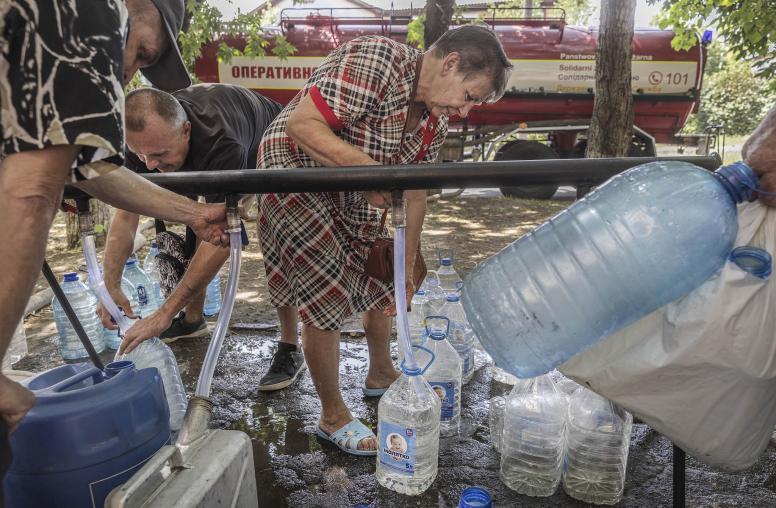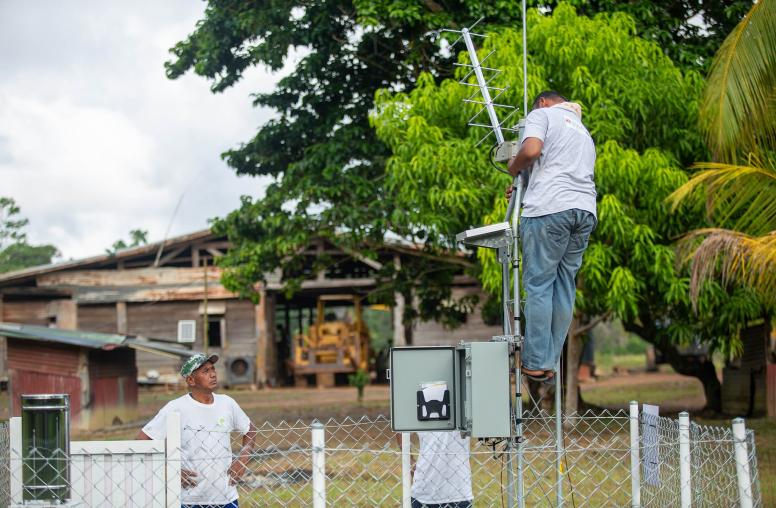Moving Toward a Just Transition in Green Minerals
How can we integrate local and global perspectives to manage the conflict risks of mining ‘green minerals?’
We need minerals to build the solar panels, wind turbines and other technologies that will decarbonize our economies — and we need a lot of them. The World Bank estimates that demand for lithium, cobalt and graphite could jump by as much as 500 percent by 2050. Yet mining for these resources has had a fraught history, and it continues to be associated with a hefty list of human rights and conflict risks, including violence, child labor, poor working conditions, land rights abuses, environmental damage and pollution, and a lack of community participation.

Alongside efforts to improve recycling and energy efficiency, our investments in green mineral mining must be made with our eyes wide open. If we are not careful in how we pivot to renewable energy, we risk repeating the conflicts and injustices — like environmental degradation and community exclusion — that have characterized the fossil fuel economy and resource extraction more broadly.
A new video on green minerals by the Wilson Center, the United States Institute of Peace and the Andean Information Network offers an overview of the challenges and possible approaches for promoting human rights and peace in a new era of mining. How do mining risks play out for green minerals? What can we do to pursue a “just transition” — starting at the very first step of supply chains?
Governing Cobalt Wealth
The Democratic Republic of the Congo (DRC) has become emblematic of the risks associated with “green mineral” mining. Violence and governance challenges in the DRC overlap with its vast critical mineral stores, which include half of the world’s cobalt, a key input for electric vehicle (EV) batteries. Cobalt exports from the DRC currently amount to 70 percent of global supply. “The DRC today has mineral reserves capable of helping the world achieve its energy transition,” said Search for Common Ground’s David Ngoy Luhaka.
Yet the country’s mineral wealth has not translated to public prosperity; nearly 60 million Congolese live on less than $2.15 per day. The DRC — where colonial-era resource concessions inflicted lasting harm — has had a history of exploitation, armed groups and poor governance linked to resource extraction. In the cobalt sector in particular, child labor, poor working conditions and conflicts over access to resources are widespread.
While communities in the DRC could potentially see gains from a global transition to renewable energy, this will require companies and governments to follow through on sound policies. “The DRC does not lack good laws, it does not lack good policies. We have very good mineral resource policies. But these policies are not being implemented,” says Luhaka.
Challenges for Emerging Lithium Powerhouses
Lithium is also in the spotlight of global efforts to decarbonize because of its use in EVs and energy storage technologies. Australia is currently the world’s top lithium producer, but soaring demand is shifting attention to Argentina, Bolivia and Chile — dubbed the “Lithium Triangle” — which together hold more than half of known global lithium deposits.
Like with cobalt, the global thirst for lithium brings significant challenges. The most common method of lithium extraction is water-intensive and produces a sizable amount of waste. In the arid Salar de Atacama in Chile, lithium production uses up as much as 65 percent of the fragile ecosystem’s water and has been met with local protests. Communities in the region have also pushed back against other threats posed by the lithium sector, including land rights violations.
Avenues for a Just Transition
Clean, renewable energy holds incredible promise to mitigate the impacts of climate change. But a truly “just transition” must consider the full life cycle of products like solar panels and batteries that spans initial mining to eventual recycling. The video suggests substantive responses on multiple fronts.
International initiatives are one central puzzle piece. When done well, they can facilitate public-private partnerships to enhance supply chain transparency and accountability and enable community input in mining activities. Standards and certifications like the Initiative for Responsible Mining Assurance can help ensure that companies take Environmental Social and Governance factors into account and avoid greenwashing.
Because such international standards are voluntary, however, national policies and laws are critical. Kathryn Ledebur, the director of the Andean Information Network, suggests that Bolivia’s constitution offers one potential legal framework. She said the constitution builds in a concept of “social control” in which Bolivian civil society actors are “allowed oversight of [mining] processes [and] have the right to be consulted.” The constitution also considers water a basic human right and explicitly protects Free Prior and Informed Consent — the right of Indigenous communities to make decisions about activities that impact their territories. And while codifying such commitments is important, full implementation and enforcement is key.
Beyond law and policy, technological investments to lower the impact of mining can also play a role. For instance, new lithium extraction technologies are being developed that use less water. In tandem with these investments, however, we need to improve recycling capacity and build a more circular economy that reduces our dependence on resource extraction in the first place.
As the international community works to center community voices and improve governance around key green mineral resources, the peacebuilding community can play a pivotal role: Their experience in consensus-building, mediation and conflict resolution can bring together the mining industry’s diverse stakeholders to advance common goals and build capacity for transparency and accountability within companies and governments.
Chris Collins is a research assistant for USIP’s Climate, Environment and Conflict program. Claire Doyle is a program assistant for the Environmental Change and Security Program at the Wilson Center.
This article was originally published by the Wilson Center’s New Security Beat.



